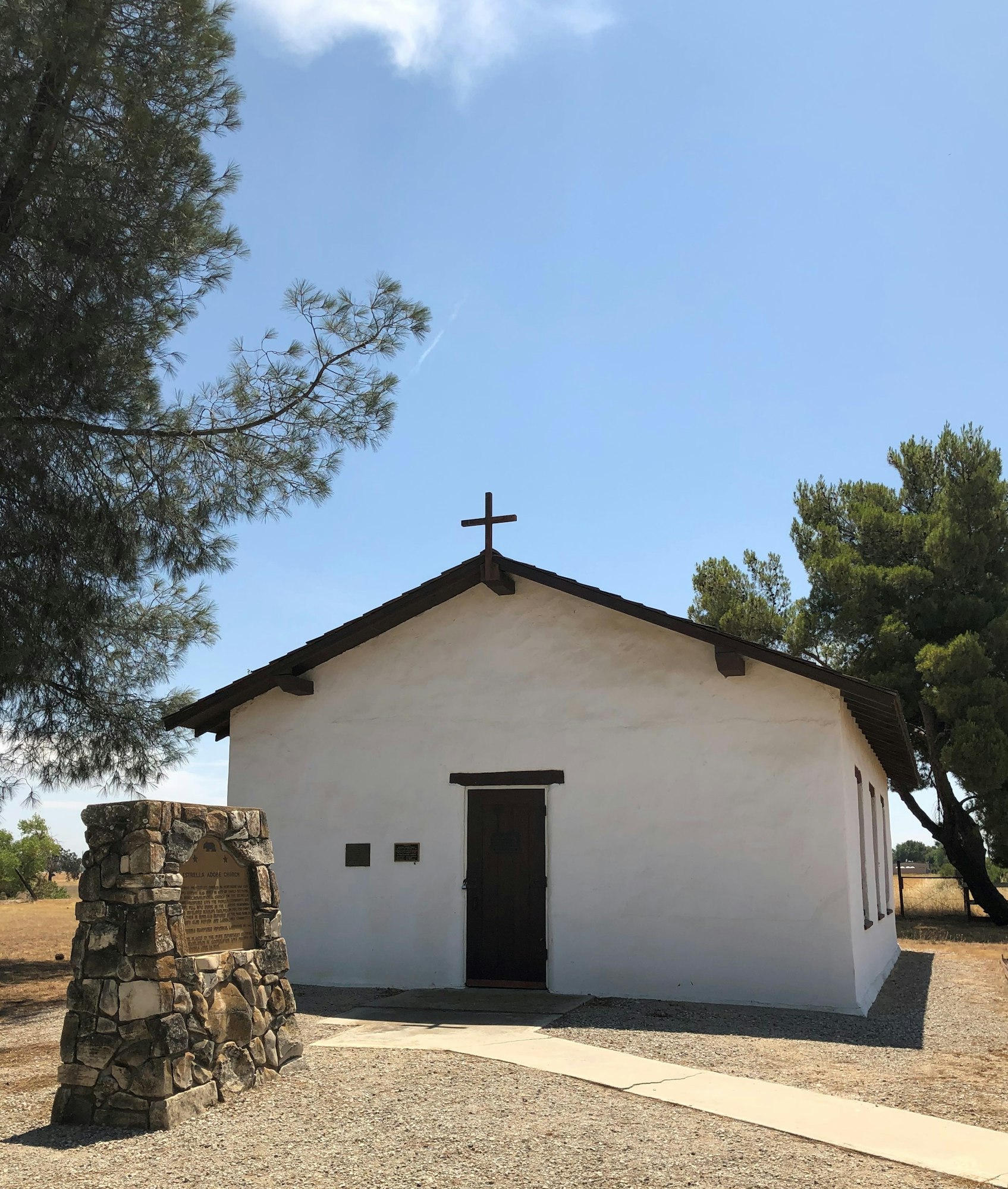History of the Estrella Adobe Church and Cemetery

The Estrella Adobe Church was the first Protestant church to be constructed in northern San Luis Obispo County. In 1877 the Southern California Conference of the Methodist Church formed a “Cambia Circuit”. This circuit included Cambria, Las Tables and Estrella. It gradually grew to include more areas and covered 300 miles.
John A. McMillan, a circuit rider who was appointed on August 20, 1877 came through the hills from Cambria to Estrella. On January 29, 1878, people gathered at the Estrella schoolhouse and organized the first Methodist Episcopal class and resolved to build a church. The first burial in the cemetery took place in 1878 as well.

Water was hauled and bricks were made on the site which was one-half mile west of the first Estrella schoolhouse. Any lumber needed was hauled over the mountains from San Luis Obispo. The six early pioneers who contributed most of the money and labor were John Fortney, Francis M. Stovall, John Marden, William Guffy, Joseph P. Moody and Dwight Reynolds. The men worked diligently, and a building measuring twenty feet by thirty feet was built free of debt. Some of the people supported the preacher in cash while others gave products of their land.
It wasn’t until 1882 that the building was finally plastered inside and out at a cost of $200 and was dedicated. The little church prospered for a few years then droughts, hard times, diseases and other problems became discouraging factors. The Methodists moved first to the Ranchita Methodist Episcopal Church, which was built in 1884, and then to the Methodist Episcopal Church in the town of Estrella in 1891. Churches were then established in Paso Robles, San Miguel and Shandon.
A Mennonite group used the abandoned church from 1898 to 1903. After that the adobe was left to crumble into ruins. In 1940, the San Luis Obispo County Board of Supervisors formed the Estrella Cemetery District and appointed three board members. In the fall of 1950, the History and Landmarks Committee of the Paso Robles Women’s Club stepped in and decided to do something about the condition of the church. Letters of appeal were sent all over the county and there was good response by various organizations and many individuals.
Jesse Crettol, Sr. of San Miguel and his sons are credited with the rebuilding of the church. They supervised the making of over 5,000 adobe bricks, with labor provided by the young men at the El Paso de Robles School for Boys. Restoration was completed and the church was rededicated on May 25, 1952.
The Women’s Club began holding a yearly Memorial Service honoring families of people buried in the Estrella Cemetery. In 1968, the Friends of the Adobes, Inc., took over the yearly service and began helping the Cemetery District with the maintenance of the Church and Cemetery.
In 1976, the first wedding in over 85 years was held at the little church. On June 14, 1981, the Adobe Church was designated a California Historical Landmark and a stone monument was erected.
The last burial in the cemetery took place in 1959. Due to erosion, fires, and vandalism, along with a lack of records, it is not known where all of the burials are. Therefore, no further burials can take place at the Estrella Cemetery until that is determined. There are at least 84 burials that are known of.
